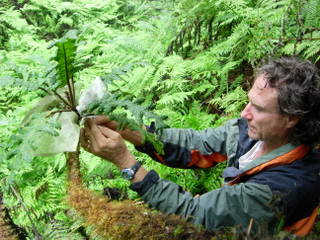The renowned Harvard biologist E. O. Wilson once wrote that the current human-caused extinction spasm "is the folly our descendants are least likely to forgive us." If so, then perhaps today's unsung heroes who are preventing some of these extinctions will turn out to be the people our descendants are most likely to thank.

What to do about all our disappearing plants and animals has been fiercely debated since long before the U.S. Endangered Species Act was signed in 1973. But the present combination of dying species due to ever-expanding human-caused threats such as climate change and widespread anti-government fervor has led to an unprecedented assault on the Endangered Species Act itself. For example, this Congress has produced at least 23 bills that propose to weaken this law or exempt key species from its protections (for example, see H.R. 39, the "Polar Bear Delisting Act.") Last month, for the first time ever, an animal (the grey wolf in the Northern Rockies) was removed from the endangered species list by an act of Congress.

Much to the chagrin of the conservation community, Obama has not turned out to be a strong environmentalist or defender of vanishing species. Consequently, over the last four years environmental groups have petitioned the Fish and Wildlife Service to add over 1,200 new species to its list of federally endangered plants and animals (during the previous 12 years, such requests averaged only 20 species per year). Ironically, this barrage of petitions and lawsuits has tied up the service's meager resources and paralyzed its listing process. For instance, though the Obama administration conceded in February that the Pacific walrus was at risk of extinction due to its melting Arctic habitat, it declined to list this species due to a backlog of hundreds of other candidate species it claimed were in even greater peril. Of course, making it onto the Endangered Species List is no guarantee of any real protection -- to date less than 2% of the 1,375 species on this list have been declared recovered.

Yet beneath the radar of bitter partisan politics and governmental paralysis, the Hawaii-based Plant Extinction Prevention Program is quietly implementing effective recovery actions for species with fewer than 50 remaining individuals (so-called PEP species). Moreover, this program is succeeding within the endangered species capital of the world (three quarters of all the bird and plant extinctions in the US have occurred within these islands, and 49 of the 59 endangered species listed by the Obama administration in the past two years have been Hawaiian plants and birds).
In 2010 alone, this program protected 116 PEP species, 101 of which were federally listed. Protection efforts include managing threats from non-native species such as wild pigs and rats, propagating and replanting PEP plants in the wild, and surveying new areas for additional populations of PEP species. "We are the arms and legs of the Endangered Species Act," said Joan Yoshioka, PEP's coordinator. "Our staff routinely prevent extinctions and even rediscover and save species that were presumed already extinct. Their dedication and often heroic efforts in the field build trust, goodwill, and critically important partnerships with landowners, local communities, and a wide variety of other organizations. While we receive much of our funding from state and federal sources, we are able to keep our focus on saving species and leave all the politics and red tape to the government agencies and let them deal with it."
"PEP is an amazing program," said Marie Bruegmann, the Plant Recovery Coordinator for the Fish and Wildlife Service in Hawaii. "I am always impressed with what they accomplish at a cost of less than $5,000 per species. To me that is a small price to pay to prevent a species from going extinct!" As neither our extinction crisis nor our polarized politics are likely to improve in the foreseeable future, perhaps the time has come for other states and organizations to try the PEP approach to saving their own threatened and endangered species.